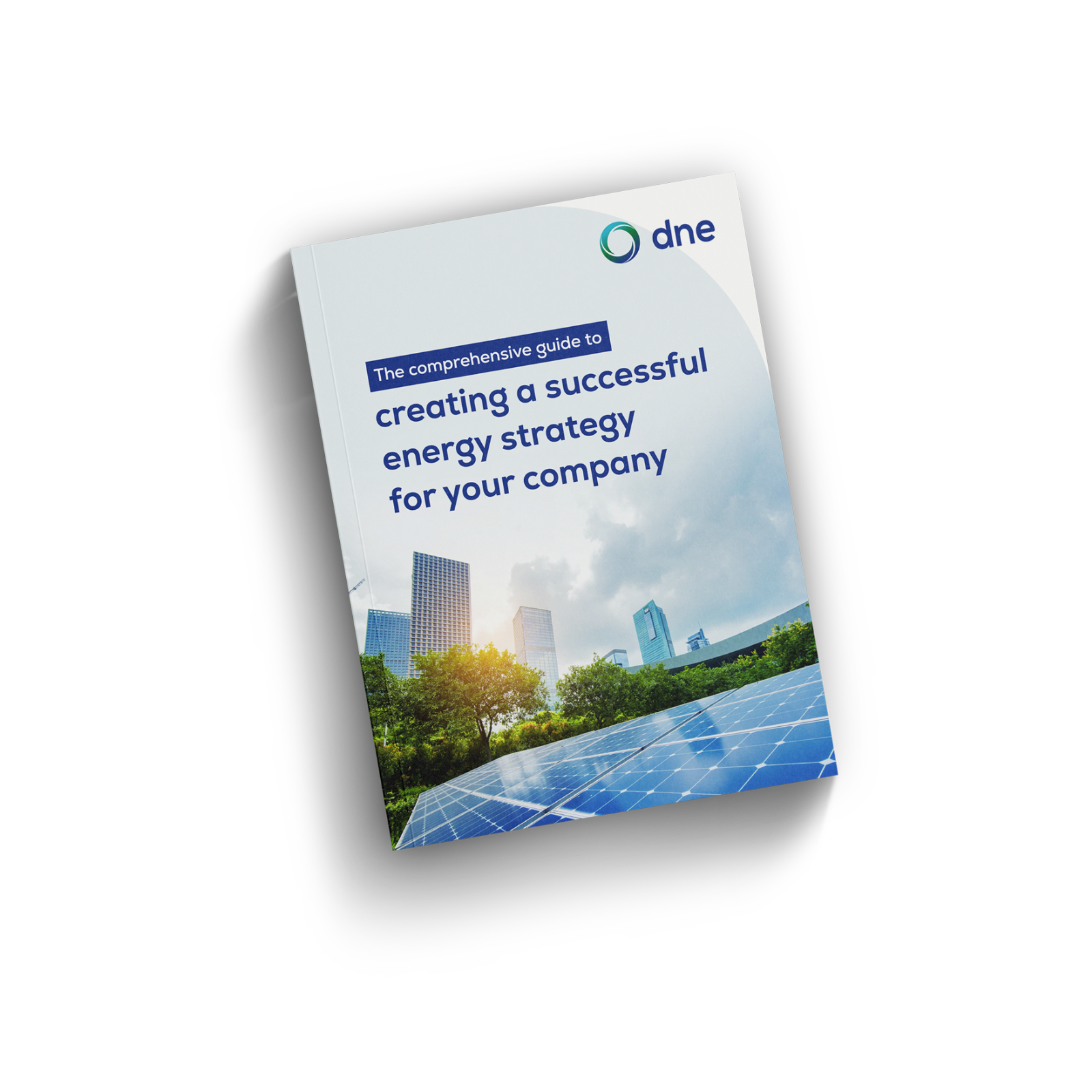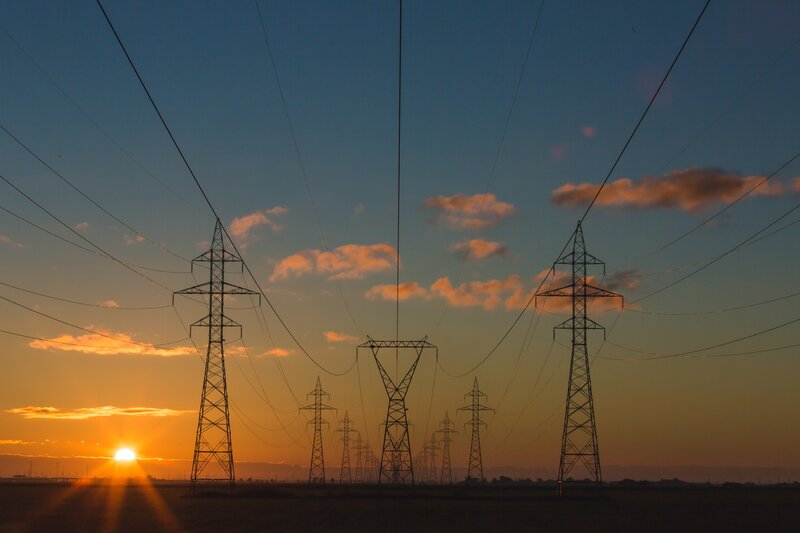The comprehensive guide to creating a successful energy strategy for your company
31 March 2023
Executive summary
Companies spend millions of dollars directly on energy every year—and millions more indirectly, on outsourcing, logistics, and supply chain costs. However, outside the chemical, petroleum and coal, and paper industries, which are the most energy-intensive, most organizations consider energy nothing more than a cost to manage. By doing that, they often miss out on opportunities to navigate market volatility, reduce risks of unmanageable expenditures, and generate additional value through savings and more efficient energy use.
The most effective way to leverage these opportunities and future-proof your business is by creating and executing a business energy strategy. A solid strategy should balance economic and environmental considerations and become a part of your overarching business roadmap to guarantee long-term success. In this guide, you’ll find everything you need to know to create a strong energy strategy for your company.
Table of contents:
- Energy strategy benefits and what hinders your ability to gain them
- Fundamental elements of business energy strategy
- Six steps to creating an energy strategy for your business
- Three common mistakes to avoid while building your business energy strategy
- Top energy strategy tips for different industries
- Conclusion

Benefits of a solid energy strategy
Energy strategy benefits and what hinders your ability to gain them
In the business world, the word “strategy” is often closely tied to a specific direction or set of activities, such as product strategy, management strategy, sales and marketing strategy, etc. While working professionals across the world are used to dealing with these types of strategies, energy strategy often seems vague and hard to develop. Besides, generally, energy strategies are associated with large corporations or governments, like this energy strategy created by the government of Northwest Territories, Canada.
However, like any other business activity, your company’s energy strategy should start with a clear vision and goals. From there, you can begin the process of defining your unique energy strategy.
That’s where a comprehensive energy strategy becomes invaluable. Knowing your short and long-term energy goals and having a clear step-by-step plan on how to reach them will help your company stay on track and achieve savings, company-wide energy efficiency, and sustainability.
Fundamental elements of business energy strategy
In the business world, the word “strategy” is often closely tied to a specific direction or set of activities, such as product strategy, management strategy, sales and marketing strategy, etc. While working professionals across the world are used to dealing with these types of strategies, energy strategy often seems vague and hard to develop. Besides, generally, energy strategies are associated with large corporations or governments, like this energy strategy created by the government of Northwest Territories, Canada.
However, like any other business activity, your company’s energy strategy should start with a clear vision and goals. From there, you can begin the process of defining your unique energy strategy.
Next, you’ll find out how to create and execute an effective energy strategy.
Six steps to creating an energy strategy for your business
1 Understand your energy needs
The best first step is an energy audit. The key is to understand your company’s internal and external energy impacts and needs.
2 Set the goals and commit to them
Ambitious yet realistic goals that will help your team work toward energy affordability, efficiency, and sustainability.
3 Organize your team
Choose a champion of your strategy. Then, get as many relevant voices in the room as possible to create a cross-functional team.
4 Map your journey
Set public targets to align all the teams. Then, identify the best way to connect two processes-energy procurement and managing energy use.
5 Report progress
Well-informed decision making depends on how closely you monitor your energy metrics. Keep track of the results, create data-driven reports, and adjust the processes if necessary.
6 Assess results and look for opportunities
Keep looking for ways to optimize and improve your energy use. Go back to step one, reconsider your energy budget, and look into new opportunities, like renewable energy.

Although your company has a unique energy portfolio, following these six universal steps to build a robust strategy will positively affect the way your company uses energy.
1. Understand your energy needs
It’s always the right time to run an energy audit, especially if you’re building your organization’s first energy strategy or updating the current one for the upcoming year. Here’s the list of high-level questions you can start with to understand your company’s internal and external energy impacts:
- How much energy do you use? How much does it cost? Depending on your industry, you can measure and monitor energy use per square foot of commercial space or a fixed number of units produced.
- What would the best energy program for your company look like?
- How does it affect your financial performance?
- What is your carbon footprint?
- How are you leveraging renewable energy opportunities?
- Does your vision align with what your customers, investors, and employees expect?
- How do you compare to competitors?
Answers to these questions will provide you with a high-level view of your company’s energy performance.
2. Set your goals and commit to them
Although most people agree that conserving energy and switching to renewable options is crucial, it’s vital to commit to energy-related goals on a company level. Otherwise, your energy goals and strategy might not translate into action.
Analyzing your audit results will help you set ambitious yet realistic goals, meaning that it will be easier for your team to keep working towards them consistently for months and years ahead.
A successful energy strategy should cover the three areas of your organization’s energy use to ensure that you leverage all the opportunities to make it affordable, efficient, and sustainable through executing this strategy. These three elements of energy use are interconnected: emphasizing efficiency will help you reduce the amount of energy consumed, which leads to lower costs and reduces ecological footprint. That said, you can start with three paramount goals:
- To manage and adhere to energy budgets and create better forecasting capabilities.
- To support energy efficiency and conservation initiatives within the organization.
- To promote renewable and alternative energy solutions for your company.
Remember to customize these goals and add your own based on your company’s unique energy consumption patterns and objectives.
3. Organize your team
Committing to energy goals often starts with the CEO stating that energy strategy is at the core of the organization’s mission. Then, it’s critical to appoint a team member who will serve as a champion and be accountable for its implementation.
Depending on the size and industry of your business, this person can be the Chief Operating Officer or the Chief Financial Officer. Generally, appointing a COO is the best decision for industrial and petrochemical manufacturers, where energy footprint is often the focus of energy strategy. Having a CFO as the strategy owner works best in organizations where energy management mostly comes down to procuring energy, like in the retail sector. This leader then creates a team that will be involved in creating and executing your company’s energy strategy. The more cross-functional this team is, the better. Hence, it’s essential to try to get as many relevant voices in the room as possible: legal, finance, operations, sustainability and other team representatives can bring tremendous value.
4. Map your journey
Once you know your baseline and have identified your goals, it’s time to map the tactical steps.
- Setting public targets can be the first milestone to help align all the teams, drive accountability, and inspire people. At the same time, it signals to external stakeholders that you’re serious about making this commitment.
- The second step can be creating an incentive-based program for those employees who should make energy their operational priority.
- Finally, remember to connect two processes–energy procurement and managing energy use. On the one hand, securing the most cost-efficient energy programs with electricity and natural gas rates that fit your budget is vital. On the other hand, reducing consumption and improving energy efficiency are just as crucial if you want to meet your energy goals.
5. Report progress
Like any KPIs tracked in your organization, energy management and your unique energy strategy need constant attention. Furthermore, given that energy rates can experience violent price swings, your energy consumption metrics and strategy must be closely monitored to enable prompt and well-informed decision-making. If you have your goals set and have identified the starting point, it’ll be easy for your energy team to monitor the results, create meaningful reports, and adjust the processes if necessary.
6. Assess results and look for opportunities
At this stage, the main task is to analyze the results. If the goal is achieved, for example, you managed to cut energy consumption by X% and brought $Y in savings, can the process be scaled? For instance, you might have decided to start with switching suppliers or optimizing energy use at a facility that could bring the most tangible savings. Now is the time to compare energy use patterns with other facilities to see if there are opportunities to bring budget stability and efficiency there.
Remember to keep looking for ways to optimize and improve your energy use. Once you go through all the steps, go back to step one, reconsider your energy budgets, and look into new opportunities, like renewable energy.
Three common mistakes to avoid while building your business energy strategy
After helping thousands of companies across Canada and the US with energy consulting, DNE has identified the three most common mistakes related to using energy for your organization.
1. “If it’s not broken, don’t fix it”
For many companies, energy is just an unmanageable cost to pay. They receive bills, pay them, try to predict how much they’ll have to pay next time if they’re on a variable program, and, unfortunately, often feel ripped off by utilities. Sometimes, in the hope that the prices will go down, businesses choose to keep paying increasingly high electricity or natural gas bills for so long that it begins accounting for the largest portion of their budget. In the most extreme cases, companies even have to shut down due to increasing energy expenditures, rising costs of supplies, and multiple other reasons.
Instead, understanding that you can control how much energy you use and how much you pay for it will lead to significant improvements in the way you manage this area of your operations and help you identify opportunities to save money, operate more efficiently, and achieve sustainability goals.
2. Not knowing how much energy you use
There should be at least one person in your organization who knows how much energy your company uses annually and when your peak seasons are.
Unfortunately, very often, no one has this information, or it’s scattered across several departments, and getting a clear view of energy consumption is a challenge. This is a widespread gap among manufacturers, which is disturbing and surprising at the same time because energy is often their highest variable cost.
Knowing the volume of energy consumed by your company allows you not only to forecast energy spending but also to find the energy product that fits your budget and goals.
3. Not knowing when your renewal date is coming up
Securing an energy program for several months happens very seldom. Usually, businesses get on an energy contract for several years, and here’s the problem: almost no one knows when the contract ends and when the best time to renew it is.
Sometimes, organizations that started their five-year energy contract four years ago don’t monitor the situation in the energy market because they’re happy with the bills they’re getting. When auto-renewal comes, they’re shocked by the amounts they have to pay.
Keeping the renewal date on your radar and regularly checking in with the energy suppliers to see what they’re offering is a very simple and effective step that is often overlooked.

Top energy strategy tips for different industries
The energy strategy you create for your organization is unique as it’s based on the results of your audit and the goals you’ve set and committed to. However, although every company is different, several tips can be helpful for entire industries. In this section, you’ll find suggestions on how to build a robust strategy for Oil&Gas, Manufacturing, Property Management, Agriculture, and Non-Profit organizations.
Manufacturing
Working for an organization in the manufacturing sector, you know that three major driving powers affect decision-making: the consumers’ demand for your product, supply costs, and laws and regulations. With so many moving pieces, your production levels can increase and drop significantly within months. How does it affect energy use? The more you utilize the machinery, the more energy you consume. If you’re on a variable program, you’re highly exposed to market volatility, which results in unpredictable electricity and natural gas bills. Furthermore, do you know if there are fees that’ll be charged if you use less or more energy than stated in your contract? That’s what your energy strategy should cover, and the first goal can be offsetting high-demand periods to bring more stability into budget planning.
Another crucial point is considering how efficient and sustainable your final products are. If you manufacture products that leave a huge carbon footprint while being used, you should consider this when developing your energy strategy. For example, Ingersoll Rand engineers and promotes pumps with added controls, letting them self-optimize for efficiency and reduced environmental impact.
Oil and Gas
If you work in the Oil&Gas industry, building an energy strategy can start with a quick audit to ensure that you’re working towards your goals. The next step is the analysis of your upstream and downstream supply chain. This is where you can substantially impact your carbon footprint and contribute to setting the benchmark for the industry, especially given the pressing expectations of society and stakeholders to reduce the environmental footprint of your operations.
Agriculture
For companies in the agriculture sector, an effective energy strategy should involve not only looking at the equipment and facilities you’re using but also analyzing the supply chains.
Earlier in 2022, many farmers in Alberta were affected by high fertilizer prices. Here’s why: the post-pandemic supply chain chaos and the geopolitical context affected natural gas prices and availability. The production of one of the most important and widely-used fertilizers, nitrogen, is an energy-intensive process that relies heavily on natural gas, so for the farmers who followed the news and stayed on top of the energy market, it wasn’t a surprise that the prices would go up. In the fall of 2021, many farmers predicted their fertilizer needs and locked in a price with a supplier. Those who were not so lucky or involved now regret holding out for a better price – a situation very similar to the energy rates and markets. That’s why your energy strategy should include the processes and operations you can control directly and the ones that happen along the supply chain.
Property Management
Property management companies that own and run multiple sites, such as condominiums, can benefit from consolidated billing. Here’s what usually happens in the accounting department: the energy bill for property A comes in first. Paying it straight away isn’t always efficient, so it’s easier for an accountant to receive all the bills for properties B-Z and pay them in one sitting. However, it often leads to the first bills being overdue, which can result in fees and affect the relationship with the supplier. That’s why one of the pillars of energy strategy for property management companies is consolidated billing.
Working on simplified, consolidated billing can be one of the primary goals of the strategy that’ll guarantee streamlined processes and stress-free energy management.
If your property management company focuses on bringing value to your clients through managing invoices, services, and paperwork, energy strategy might not be top of mind. Still, if you propose a solution that solves the energy challenges that your clients face, it will strengthen your relationships with them, which is crucial for any business. To begin with, you can discover the goals of the companies that you manage properties for. For example, they might want to offset their energy usage, reduce consumption, or create insightful energy budget reports. With these goals in mind, you can look into energy products that meet your clients’ needs.
Non-profits
The main challenge for any non-profit organization when it comes to changing processes or making decisions is getting the message across to all board members. Moreover, non-profit corporations often run on tight budgets and depend on government funding. Hopefully, energy strategy can help you find the best energy goals and reach goals related to energy affordability, efficiency, and sustainability. The first step would be similar to what we’ve covered earlier in this guide–running an energy audit and setting your goals. Choosing the energy supplier might require more time and collaborative effort because, for many non-profit companies, long-term commitments to supply agreements which offer the most stability, might require board approval.
Conclusion
Developing a strong energy strategy for your company can seem demanding, but following the steps and suggestions outlined in this guide will help you go through this process with minimum effort and maximum results.
Overall, you need the right team to work on the right goals to achieve the right results. The hardest task is to define what “right” means in each of these cases, and running a detailed energy audit is the best first step.

You don’t need a Ph.D. to create an energy strategy for your business
What you need is to run a proper audit and analyze consumption patterns, define solutions and make decisions, with enough room for tests and experiments.
DNE’s energy consulting professionals have extensive expertise allowing them to create and implement the tailored energy strategy that meets your unique goals.
If you need help building your energy strategy or you’d prefer to delegate it to industry experts, DNE is your partner of choice.






